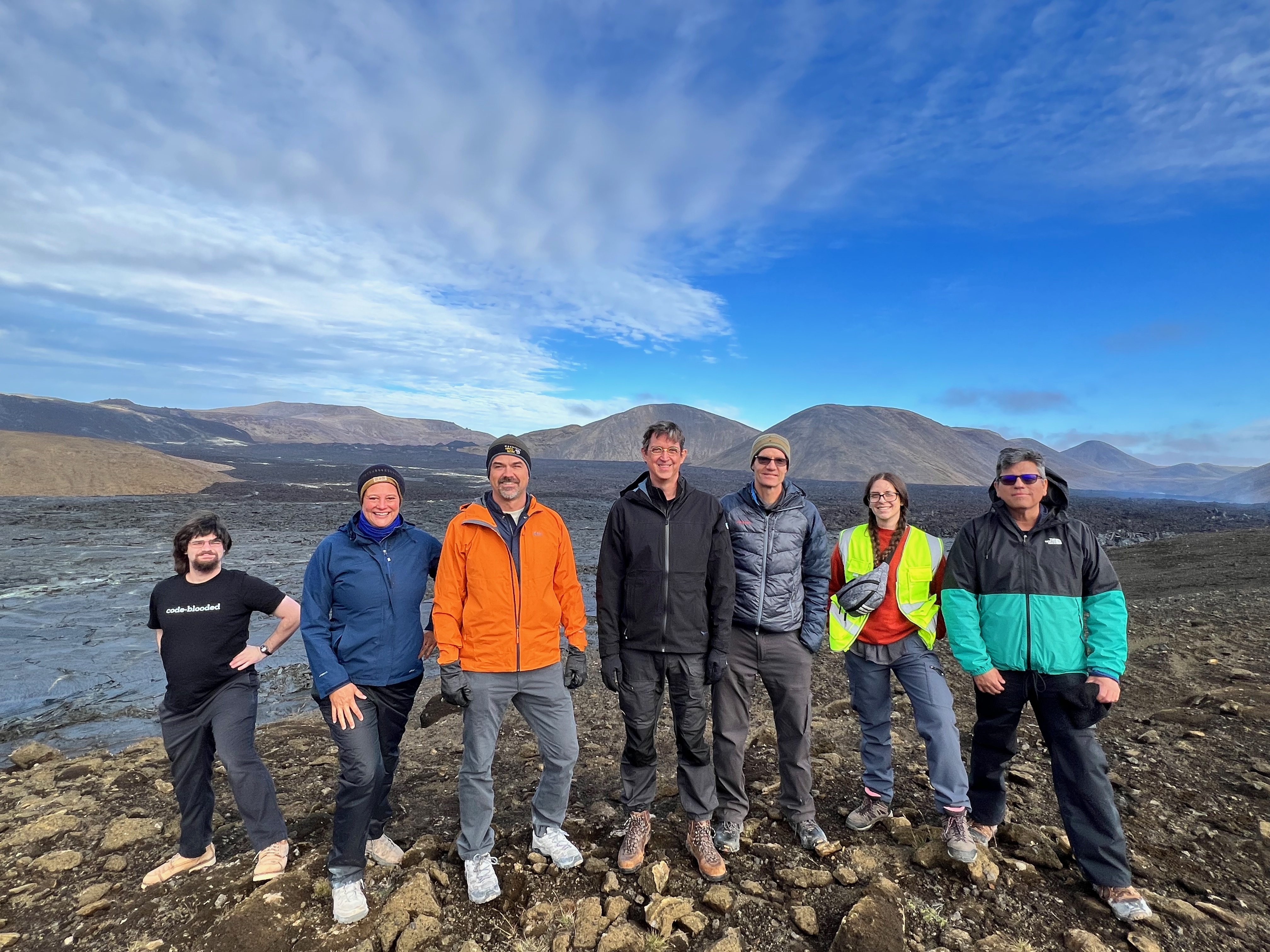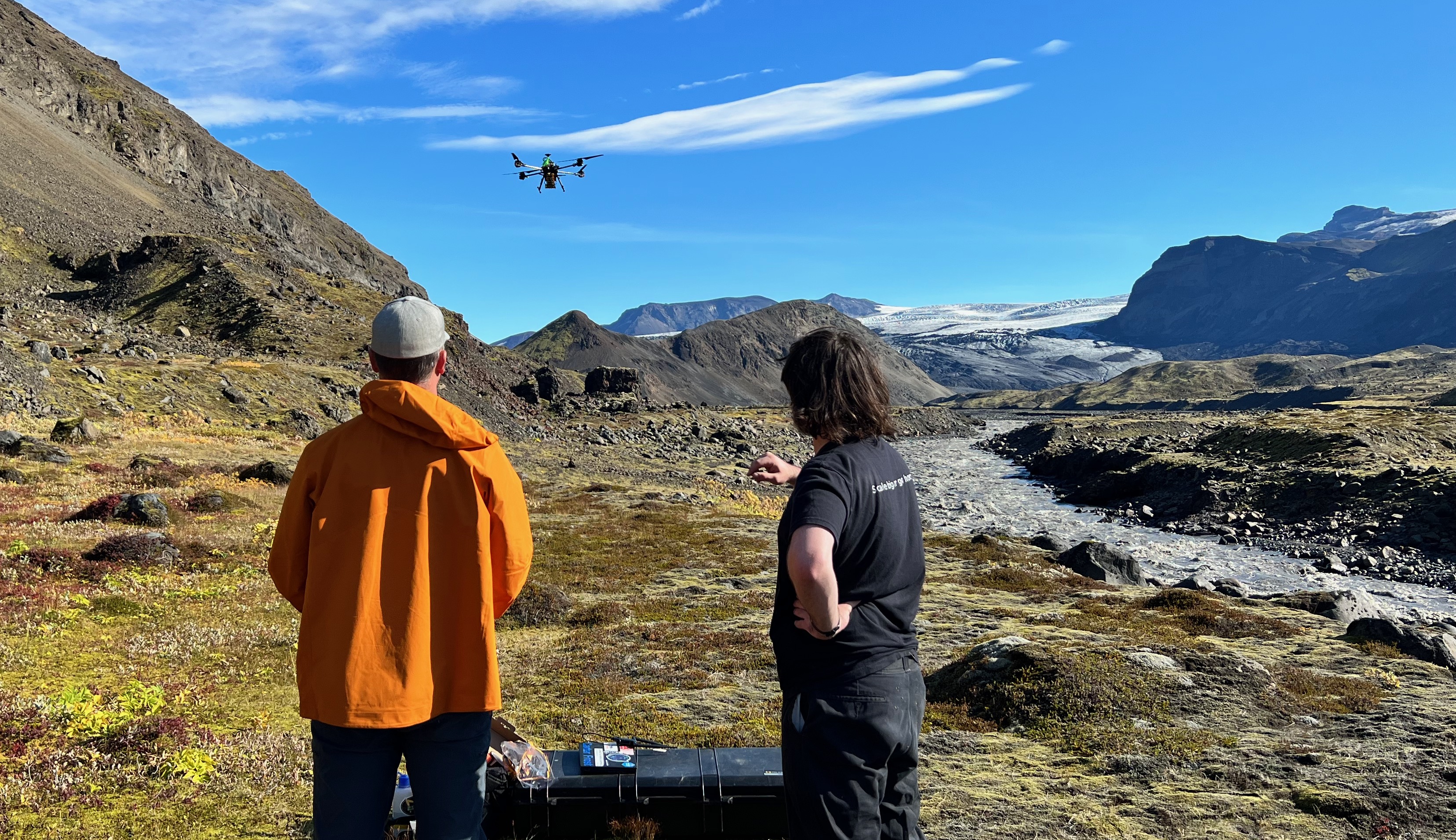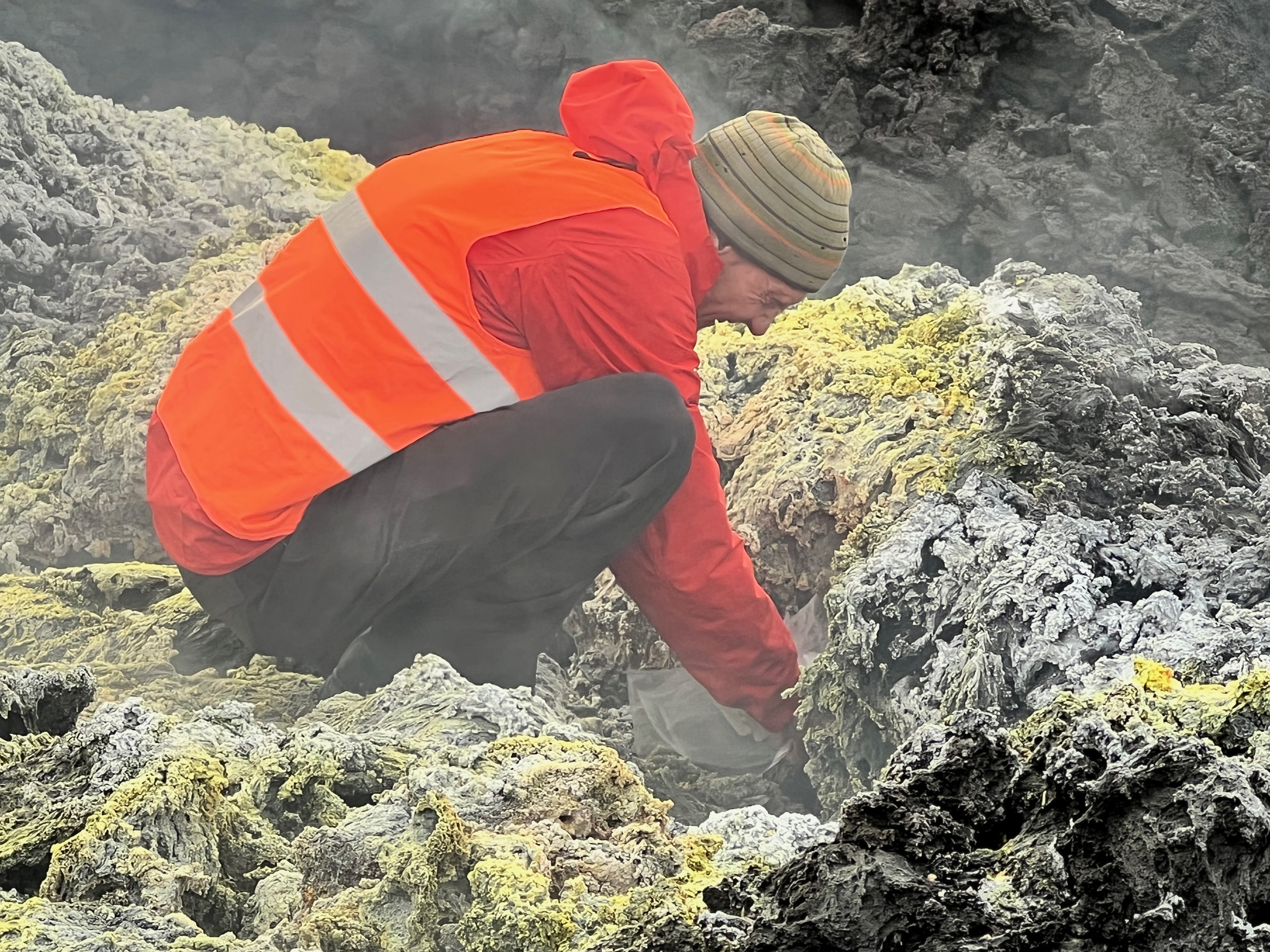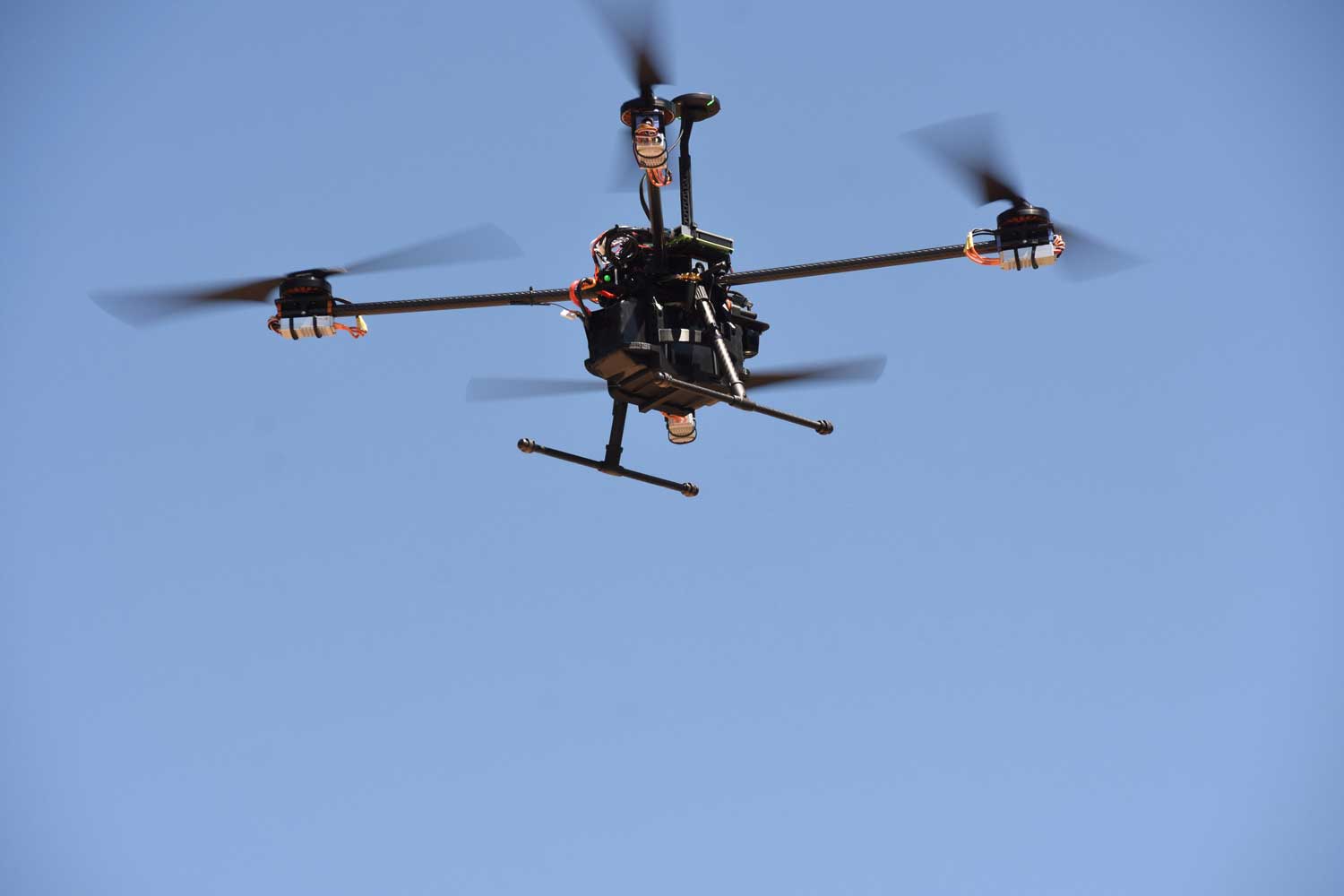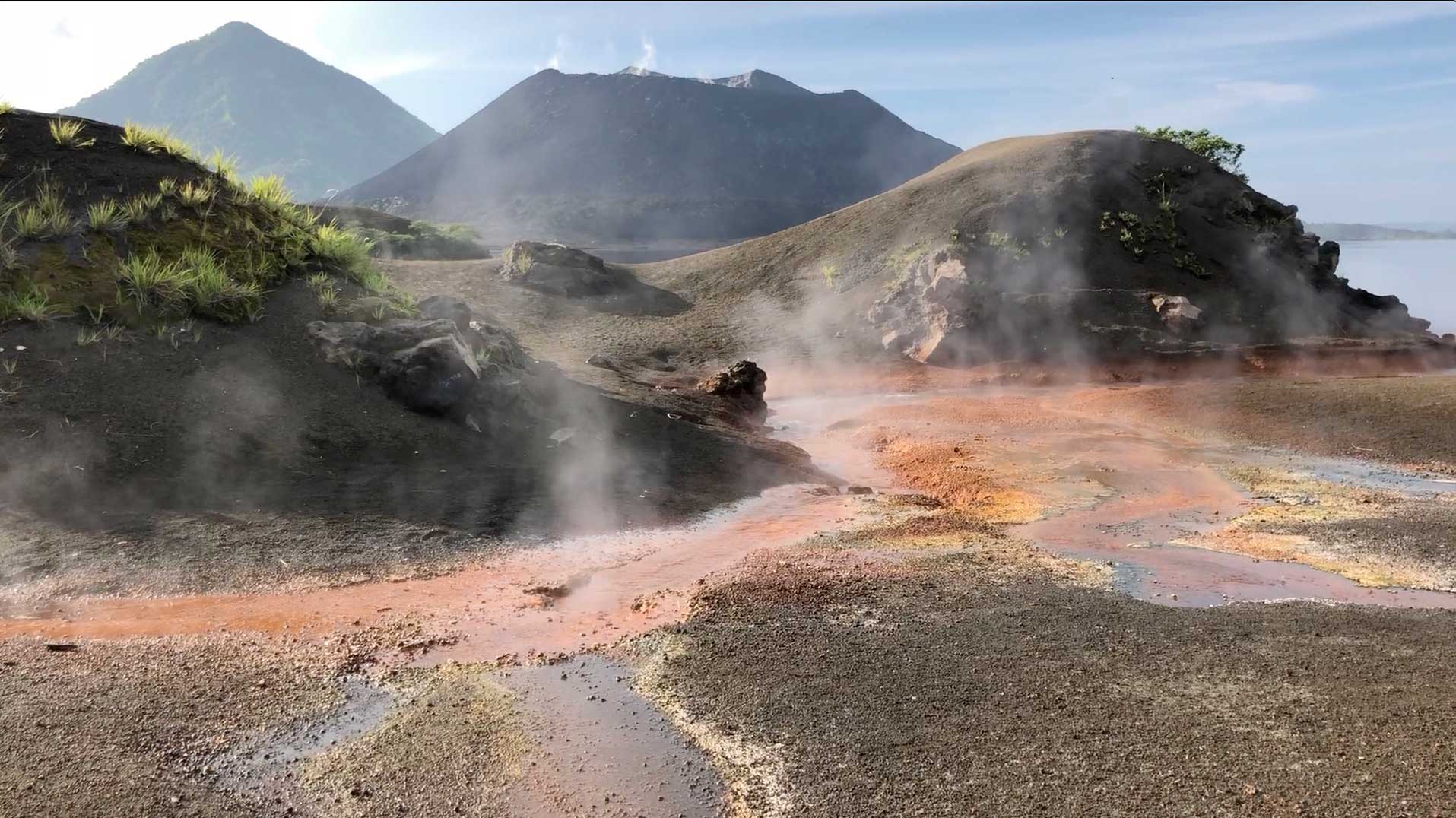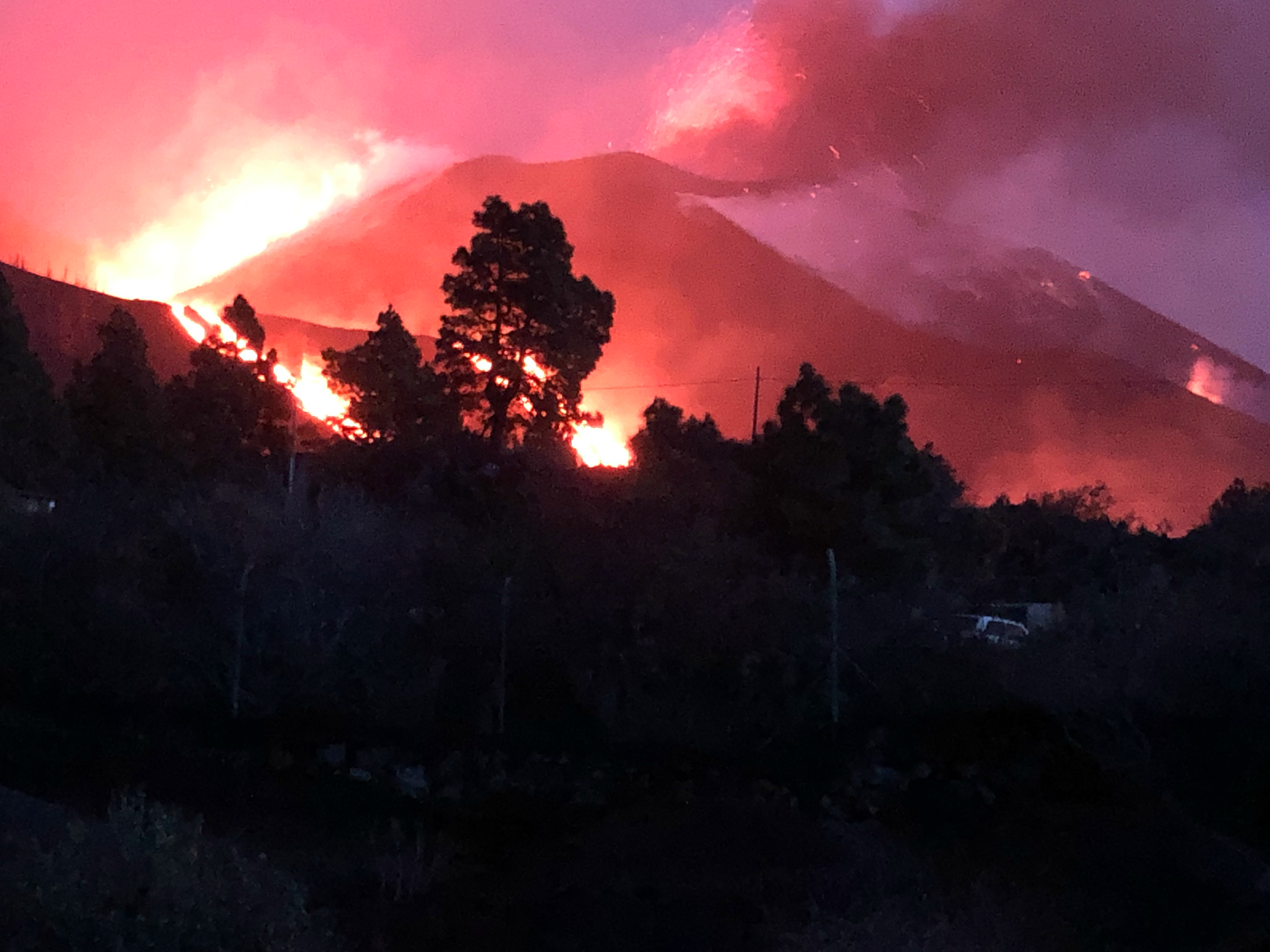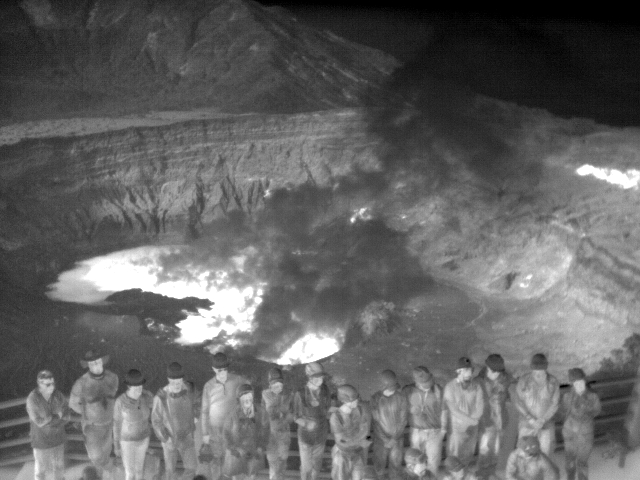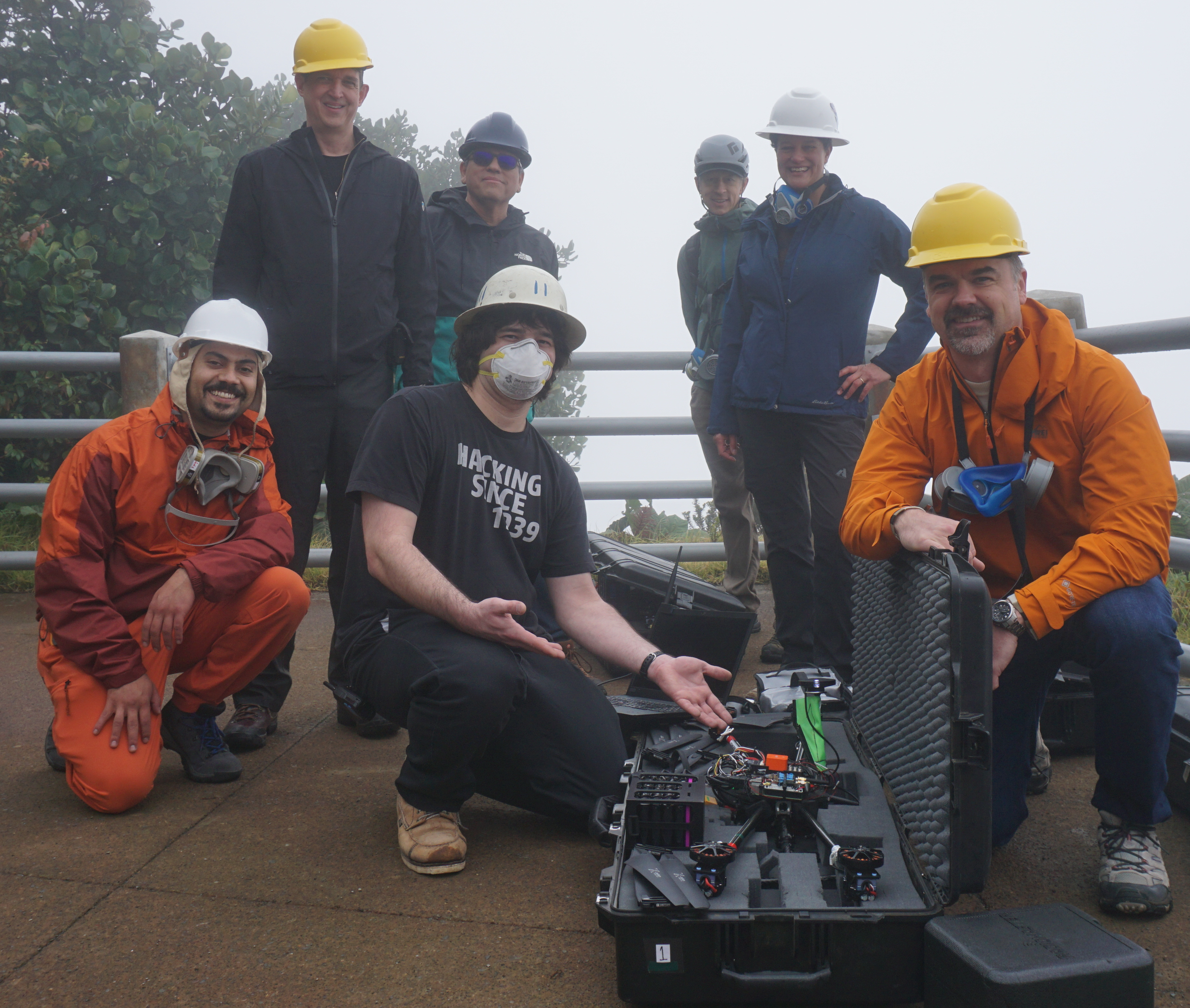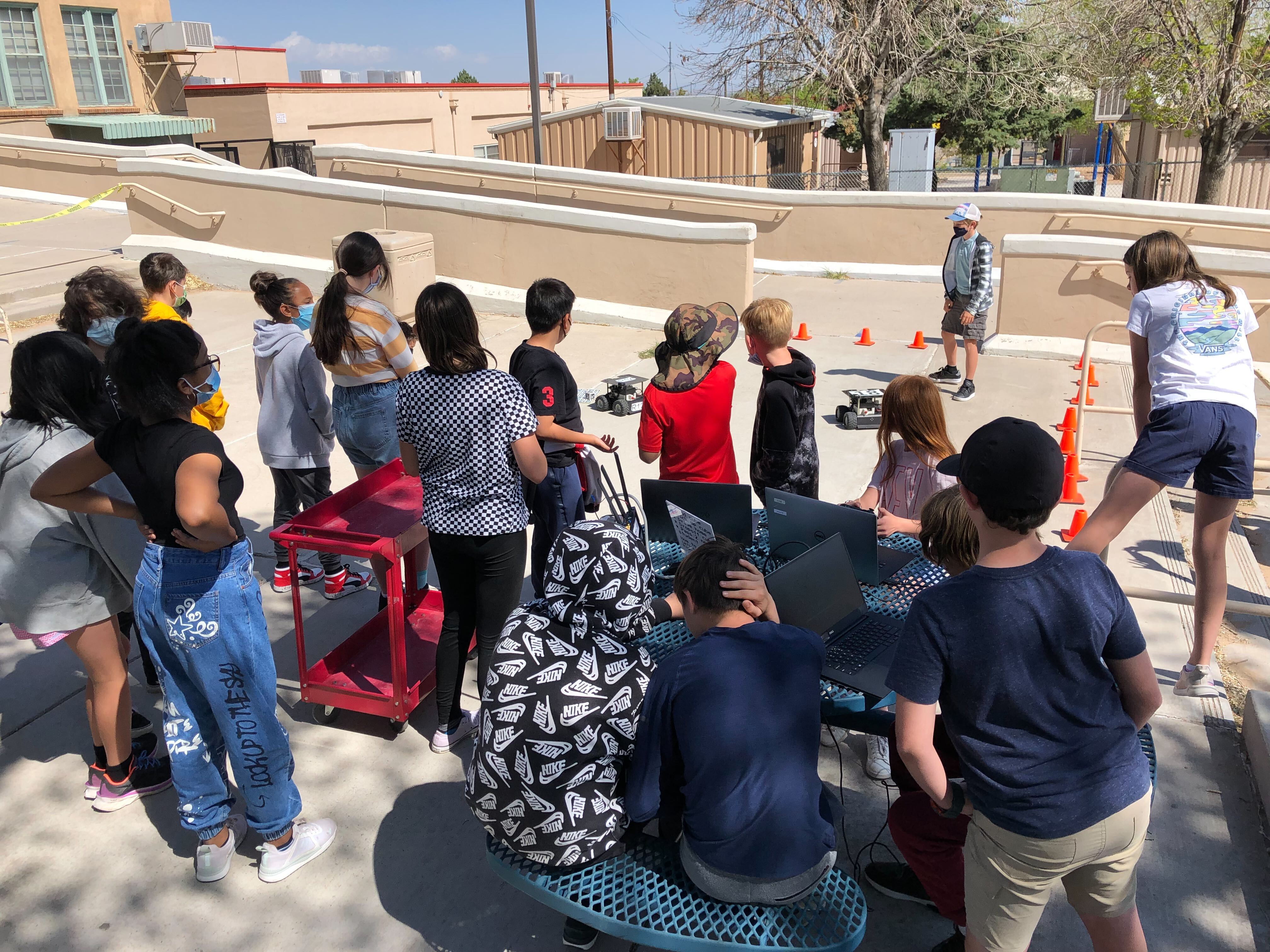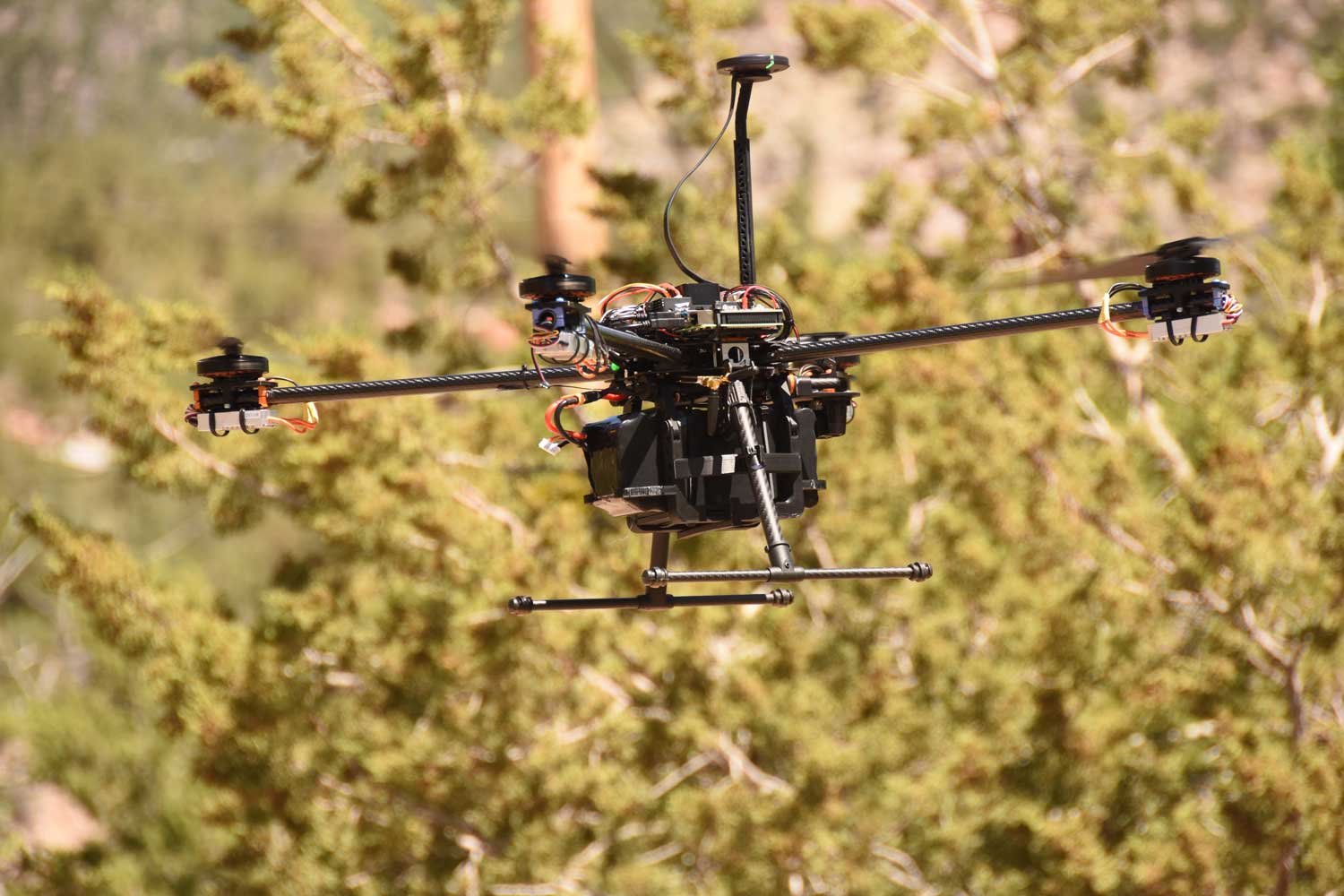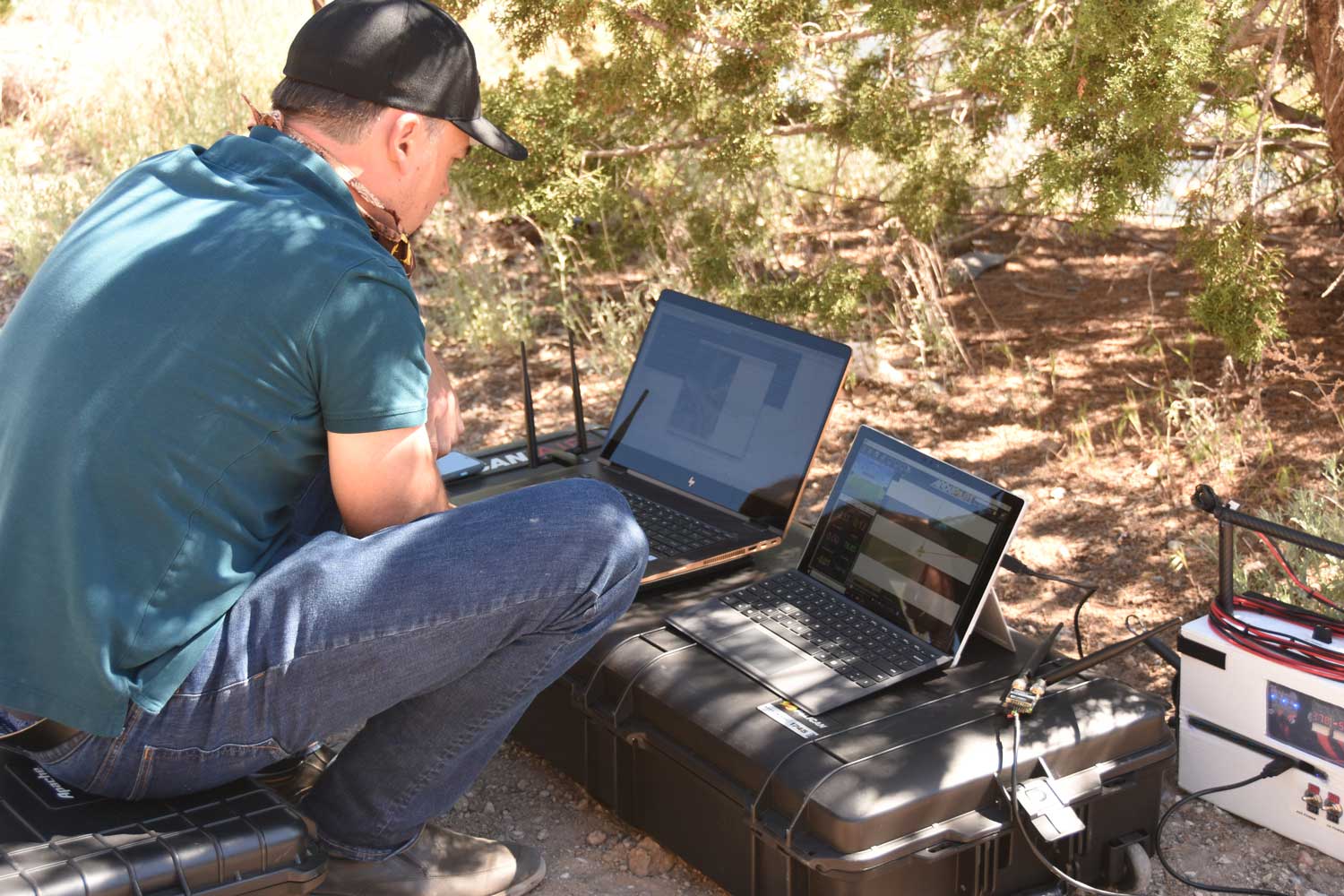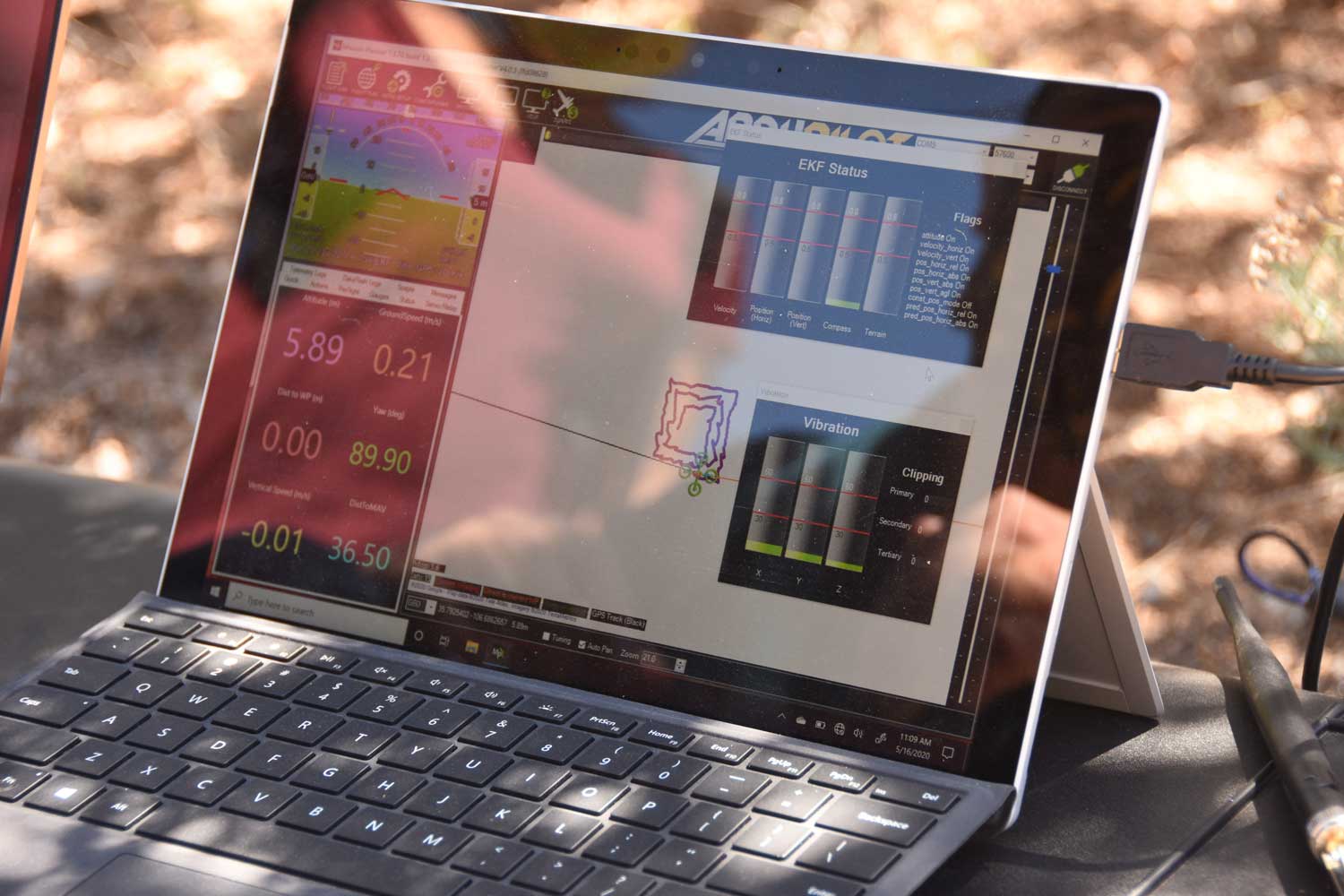Varsha Dani, Abir Islam, Jared Saia
We address the problem of designing a distributed algorithm for two robots that sketches the
boundary of an unknown shape. Critically, we assume a certain amount of delay in how quickly
our robots can react to external feedback...
MLA: Dani, Varsha and Islam, Abir and Saia, Jared. (2023). Boundary Sketching with Asymptotically Optimal Distance and Rotation. Structural Information and Communication Complexity. 978-3-031-32733-9 357--385.
John Ericksen, Matthew G. Fricke, Scott Nowicki, Tobias P. Fischer, Julie C. Hayes, Karissa Rosenberger, Samantha R. Wolf, Rafael Fierro, and Melanie E. Moses
We present methods for autonomous collaborative surveying of volcanic CO2 emissions using
aerial robots. CO2 is a useful predictor of volcanic eruptions and an influential greenhouse
gas. However, current CO2 mapping methods are hazardous and inefficient, as a result, only a
small fraction of CO2 emitting volcanoes have been surveyed. We develop algorithms and a
platform to measure volcanic CO2 emissions...
MLA: Ericksen, John and Fricke, G. Matthew and Nowicki, Scott and Fischer, Tobias P. and Hayes, Julie C. and Rosenberger, Karissa and Wolf, Samantha R. and Fierro, Rafael and Moses, Melanie E.. (2022). Aerial Survey Robotics in Extreme Environments: Mapping Volcanic CO2 Emissions With Flocking UAVs. Frontiers in Control Engineering. 3 .
Drone CO2 Measurements During the Tajogaite Volcanic Eruption
John Ericksen, Tobias Fischer, Scott Nowicki, Nemesio Pérez, Pedro Hernandez, Eleazar Padrón, Melanie Moses, G. Matthew Fricke
We report in-plume CO2 concentrations and isotope ratios during an active eruption of
the Tajogaite Volcano. CO2 measurements inform our understanding of volcanic contributions
to the global climate carbon cycle, and the role of CO2 in eruptions...
Under review at Science Advances.
John Ericksen, Abhinav Aggarwal, G. Matthew Fricke, Melanie E. Moses
Measurement of volcanic CO2 flux by a drone swarm poses special challenges. Drones must be
able to follow gas concentration gradients while tolerating frequent drone loss. We present
the LoCUS algorithm as a solution to this problem and prove its robustness. LoCUS relies on
swarm coordination and self-healing to solve the task...
MLA: Ericksen, John and Aggarwal, Abhinav and Fricke, G. Matthew and Moses, Melanie E.. (2020). LoCUS: A Multi-Robot Loss-Tolerant Algorithm for Surveying Volcanic Plumes. 2020 Fourth IEEE International Conference on Robotic Computing (IRC). 113 to 120. Status = Added in NSF-PAR doi: https://doi.org/10.1109/IRC.2020.00025
Cardona, Gustavo A. and D'Antonio, Diego S. and Fierro, Rafael and Saldana, David
We present a method for cooperative transportation using two catenary robots. Each catenary
robot is composed of two quadrotors connected by a hanging cable. Unlike other methods in the
literature for aerial transportation using cables, we do not assume that the cables are attached to the object.
Instead, the quadrotors wrap cables around the object and pull...
MLA: Cardona, Gustavo A. and D'Antonio, Diego S. and Fierro, Rafael and Saldana, David. (2021). Adaptive Control for Cooperative Aerial Transportation Using Catenary Robots. IEEE 2021 Aerial Robotic Systems Physically Interacting with the Environment (AIRPHARO). 1 to 8. Status = Added in NSF-PAR doi: https://doi.org/10.1109/AIRPHARO52252.2021.95...
Nichol, J. Jake and Peterson, Matthew G. and Peterson, Kara J. and Fricke, G. Matthew and Moses, Melanie E.
We use machine learning techniques, including random
forest regression and Gini importance, to show that the Energy Exascale Earth System Model (E3SM)
relies too heavily on just one of the ten chosen climatological quantities to predict September
sea ice averages. Furthermore, E3SM gives too much importance to six of those quantities when
compared to observed data. Identifying the features that climate models incorrectly rely on
should allow climatologists to improve prediction accuracy.
MLA: Nichol, J. Jake and Peterson, Matthew G. and Peterson, Kara J. and Fricke, G. Matthew and Moses, Melanie E.. (2021). Machine learning feature analysis illuminates disparity between E3SM climate models and observed climate change. Journal of Computational and Applied Mathematics. 395 (C) 113451. doi: https://doi.org/10.1016/j.cam.2021.113451
E. J. Liu1, A. Aiuppa, A. Alan, et.al.
Volcanic emissions are a critical pathway in Earth’s carbon cycle. Here, we show that aerial
measurements of volcanic gases using unoccupied aerial systems (UAS) transform our ability to
measure and monitor plumes remotely and to constrain global volatile fluxes from volcanoes...
MLA: Liu, Emma J., et al. "Aerial strategies advance volcanic gas measurements at inaccessible, strongly degassing volcanoes." Science Advances 6.44 (2020): eabb9103.
Maharjan, D and Agüero, M and Mascarenas, D and Fierro, R and Moreu, F.
This article studies the role of Augmented Reality (AR) technology as a tool to increase human
awareness of infrastructure in their inspection work. The domains of interest of this research
include both infrastructure inspections (emphasis on the collection of data of structures to
inform management decisions) and emergency management (focus on the data collection of the
environment to inform human actions)...
MLA: Maharjan, D and Agüero, M and Mascarenas, D and Fierro, R and Moreu, F. (2021). Enabling human–infrastructure interfaces for inspection using augmented reality. Structural Health Monitoring. 20 (4) 1980 to 1996. Status = Added in NSF-PAR doi: https://doi.org/10.1177/1475921720977017
A. Barisic, M. Ball, N. Jackson, R. McCarthy, N. Naimi, L. Strassle, J. Becker, M. Brunner, J. Fricke, L. Markovic, I. Seslar, D. Novick, J. Salton, R. Siegwart, S. Bogdan, and R. Fierro
With the rapid development of technology and the proliferation of uncrewed aerial systems (UAS),
there is an immediate need for security solutions. Toward this end, we propose the use of a
multi-robot system for autonomous and cooperative counter-UAS missions. In this paper, we present
the design of the hardware and software components of different complementary robotic
platforms: a mobile uncrewed ground vehicle (UGV) equipped with a LiDAR sensor, an uncrewed aerial vehicle (UAV)
with a gimbal-mounted stereo camera for air-to-air inspections, and a UAV with a capture mechanism equipped with radars and camera...
MLA: A. Barisic, M. Ball, N. Jackson, R. McCarthy, N. Naimi, L. Strassle, J. Becker, M. Brunner, J. Fricke, L. Markovic, I. Seslar, D. Novick, J. Salton, R. Siegwart, S. Bogdan, and R. Fierro, “Multi-Robot system for autonomous cooperative counter-UAS missions: Design, integration, and field testing,” IEEE International Symposium on Safety, Security, and Rescue Robotics (SSRR), Sevilla, Spain, Nov. 2022, pp. 203-210. Status = AWAITING_PUBLICATION.
J. Lin, Y. Wang, Z. Miao, Q. Lin, G. Hu, and R. Fierro
This article addresses the problem of quadrotor formation control with inaccessible linear
velocity and the unknown disturbances under directed interaction topologies. Considering the
unknown disturbances act in both the translational and rotational motions of each underactuated
quadrotor, a hierarchical distributed disturbance rejection controller is developed for the
quadrotor formation...
MLA: J. Lin, Y. Wang, Z. Miao, Q. Lin, G. Hu, and R. Fierro, “Robust Linear-Velocity-Free Formation Tracking of Multiple Quadrotors with Unknown Disturbances,” IEEE Transactions on Control of Network Systems, pp. 1-12, January 2023. doi: 10.1109/TCNS.2023.3239560.
